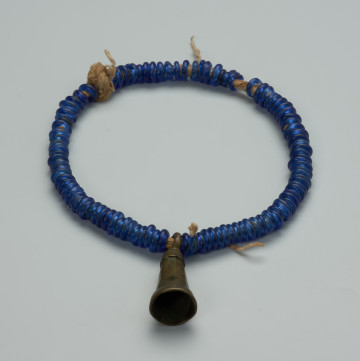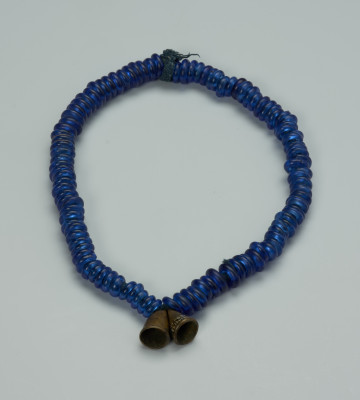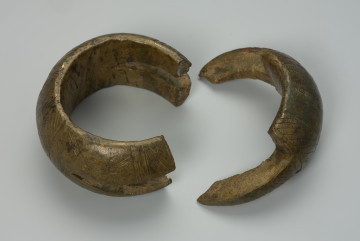
Necklace
między 1920 — 1930
National Museum in Szczecin
Part of the collection: Collection of Dogonian art
According to Denise Paulme, a French Africanist and anthropologist, the Dogon '(...) man is master of the street, but inside the house, the woman sets the laws and acts in her way'. Dogon women primarily take care of the children and the farm. They bring water and wood to the kitchen, prepare meals and keep the farm tidy. When a man has many wives, the eldest of them distributes the provisions and takes care of the management of the whole farm. In the dry season, women are also employed in crafts. They sell the products of their work, such as ceramics, at the market. They also run food stalls selling doughnuts, fried fish and beef offal soups, and agricultural produce.The higher the position of a woman in a Dogon community, the more children she has. A woman's attitude to her husband and family is also critical (a woman should know her rights and duties). When choosing a candidate for a wife, beauty is of secondary importance, and the most important is her character. The Dogon say that 'he who chases beauty goes astray'. Nevertheless, a Dogon woman wants to be liked, so she takes care of her appearance, using various cosmetic procedures and decorating her body with beautiful clothes, jewellery and hairstyles. Women lubricate their skin with karite butter or sa oil (of the Lannea acida tree in the Anacardiaceae family); cow's butter is also particularly desirable for cosmetic purposes. The most common ornaments worn by women are necklaces with pendants and bracelets worn mainly on the wrists. Until the mid-20th century, oversized and heavy bracelets made of copper or iron predominated. Nowadays, light and delicate ornaments are more and more common.
Katarzyna Findlik-Gawron
Author / creator
Dimensions
cały obiekt: height: 1,3 cm, width: 7,3 cm
Object type
body adornment
Creation time / dating
Creation / finding place
Identification number
Location / status

między 1920 — 1930
National Museum in Szczecin

między 1920 — 1930
National Museum in Szczecin

between 1940 — 1950
National Museum in Szczecin
DISCOVER this TOPIC
Castle Museum in Łańcut
DISCOVER this PATH
Educational path